If there were any lingering doubts about Africa’s return to rallying’s top table, a family of warthogs wandering through service on Sunday morning confirmed it. Yep, the Safari’s back.
What’s more, it was back with the sort of epic adventure the World Rally Championship has been sorely missing for the last 19 years. That, my friends, was an awesome three days. Unless you were driving a Hyundai.
Beyond the warthogs, we had drama; beyond the i20s, we had a Japanese driver leading a WRC round for the first time in close to 30 years. And ultimately we had a Sébastien Ogier-Toyota masterclass in control of both the rally and the title chase.
Landing into Nairobi to compete in Africa for the first time, the Frenchman was, by his own admission, contorted by the love of the country and the competition and the desire not to impact on the local wildlife population.
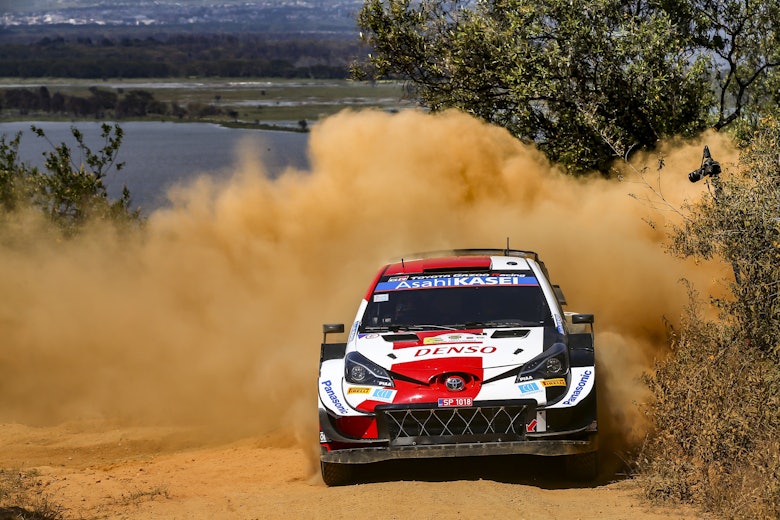
“I love my job,” Ogier said following the recce. “I love to be here, but I am a bit confused if it’s the right thing to do in the middle of nature and make a race in there.
“There are some positives, such as the enthusiasm from the locals, a very warm welcome that we got – everyone is excited to see that. But, on the other hand, in my mind and in my heart I’m not sure how to feel about the fact we are in the middle of animals that I want to protect and don’t want to disturb.
“And on the economy part, this is a country that is definitely still poor with high poverty and we can ask ourselves if the budget is best spent or could be better spent than on the race.”
Ogier has evolved into something of a moral compass for the championship and, while his deliberations were worthy ones, they had to be put on the backburner when the helmet was pulled on and the business of winning a rally was entered into.
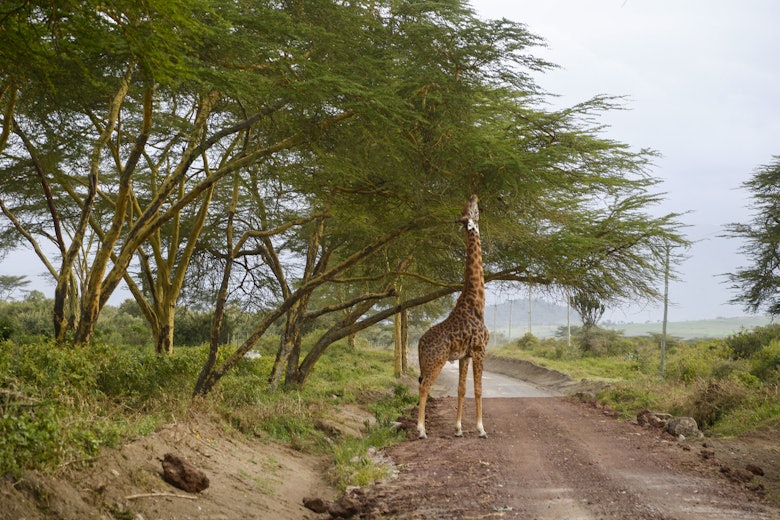
The step into the unknown
For weeks, we’d been talking about the fact the drivers knew nothing (OK, nearly nothing) of what lay ahead of them on the roads around Lake Naivasha.
And when Ogier dropped the clutch off the line in Chui Lodge and then swung immediately into the trees between two bushes on the left, excitement levels went through the roof.
This was more than something new. This was something from a different planet.
The twists and turns of Chui Lodge gave way to eye-watering speed off the line in Kedong. Unsure of how the road would evolve behind him, Ogier had to give it everything.
Almost everything.
Victory, he was sure, would go to the driver who went fastest, slowest.
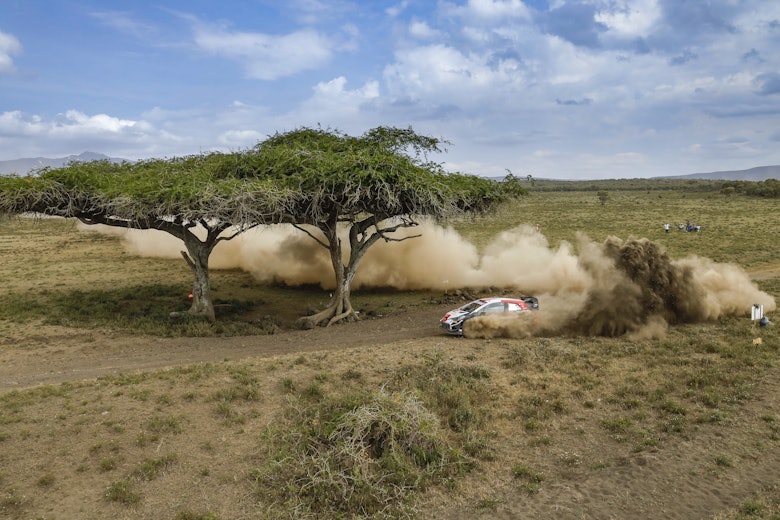
Pinging the Toyota Yaris WRC off a bank on the outside of the first corner of significance on SS3 tweaked the left-rear suspension. By the end of the test, the oil was all gone from the reservoir and one quarter of the champ’s chariot was suspended by a spring alone. Typically, he found a way through the next two stages. He’d dropped to seventh. He was two minutes off the lead.
At the end of day one, Ott Tänak called it.
“Anybody can win this,” he said. “Even if you’re two minutes down.”
Round six – regardless of its name – wasn’t long enough to slash that gap on pace alone. Something had to happen if Ogier was going to re-engage. Welcome to Kenya. Two things happened. The first of those was when the heavens opened on the second run through Saturday afternoon’s repeated Sleeping Warrior test.
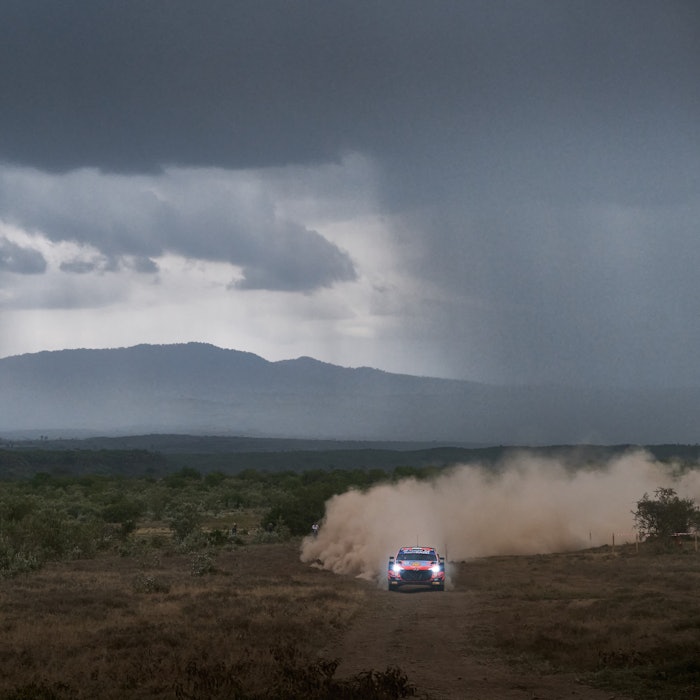
How a Safari storm spliced and split one WRC stage
Sleeping Warrior was a dramatic and treacherous affair that looked very different for the various drivers
Here’s Ogier on dealing with one particular Teflon turn in Africa.
“It was over the hill in sixth gear, maybe around 180 kph (110 mph), and then hit the brakes,” he said. “It was like more than 200 meters before a third-gear corner, so you should be way too early to brake there. But in the end, I just started to slide. I had lost the car for maybe 100 meters and managed – somehow – to slow it down and just make the corner a bit wide.”
Black. Cotton. Two words that added further weight to the discussion of whether or not this was a real Safari. Don’t worry we’re getting to that…
When water meets volcanic ash (which has the consistency of talcum powder – see our Sunday morning preview for a more scientific investigation) it offers the resistance of ice. But it also become horribly sticky. It fills the tire’s tread pattern and then sits the tyre on top of the surface.
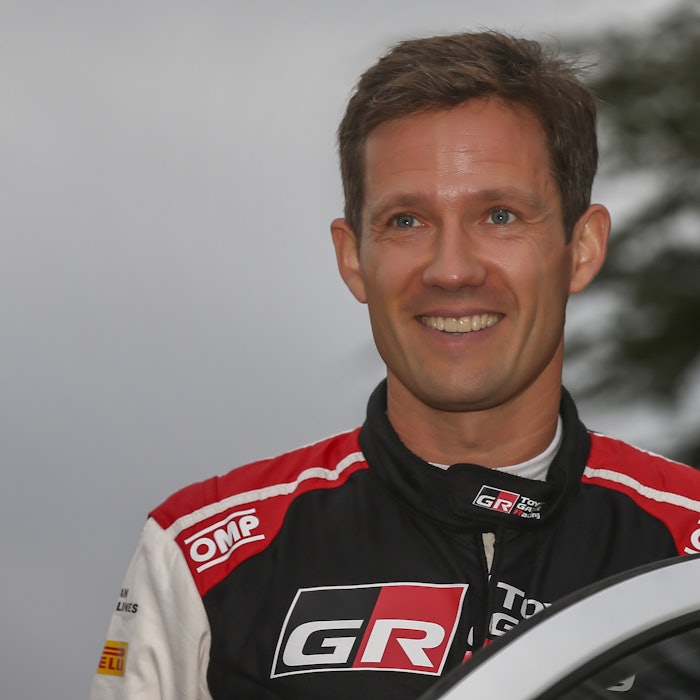
This is a beautiful victory for us. In a beautiful country. I think this rally didn’t disappointSébastien Ogier
Ogier agrees.
“Some sections,” he said, “when it starts to rain heavily, we knew that it can be like ice. Yeah, I can confirm that.”
A demisting issue for Tänak moved Ogier up to third, but his arrival at the sharp end only came after Neuville’s suspension failed on the final morning.
But before Ogier could uncork another bottle of champagne, he first had to deal with his sensational team-mate Takamoto Katsuta. The pair were tied on precisely the same time after SS16 and more than three hours’ competition.
What did Toyota want?
Did they fancy a Japanese driver to follow in the footsteps of Kenjiro Shinozuka (double Ivory Coast victor) and Yoshio Fujimoto, both who won the Safari Rally in 1995 (albeit as a non-championship round) and take a Japanese car to victory in Africa? That would have been nice.
But Ogier found the extra gear and eased clear of Taka.
Completing the final stage 21.8s off the win and scoring his first podium was something a dream result for Katsuta.
“[For] so long time, I haven’t been in this kind of place,” Katsuta told DirtFish, “so I’m very happy – but there are still things to improve on. There’s still not enough performance [from me]. Let’s say I thought now was not the time to fight with Séb – but in the near future I will try to catch him.”
Like the best of the best, Katsuta knows he’ll never reach his summit by settling for second. Yes, Sunday night was worth a pat on the back, but it’s just another step towards that ultimate goal.
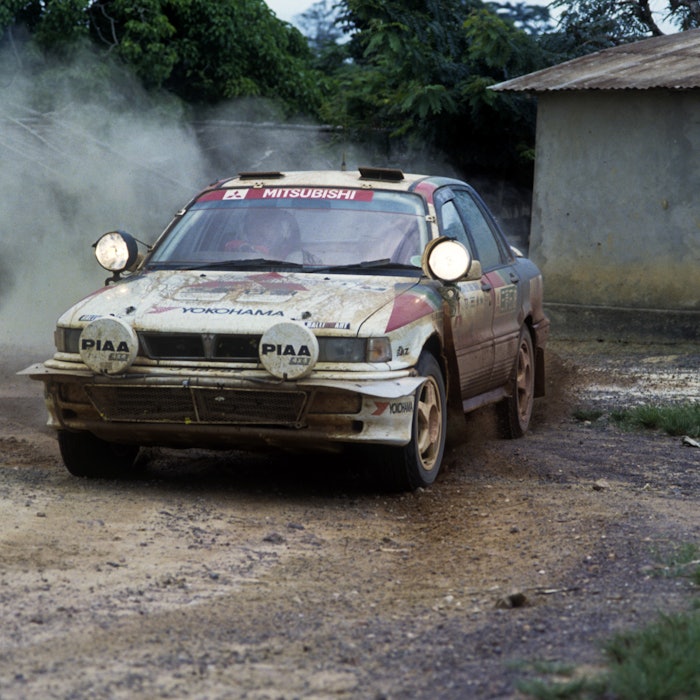
The 10 oldest WRC winners
Find out where Shinozuka ranks among the oldest drivers to win world rallies
A first Japanese win since Shinozuka’s last Ivory Coast success in 1992 is in sight.
Fifty-three wins down the road, Ogier knows what it takes. He was impressed with Katsuta.
“He wasn’t easy to catch,” said the winner. “This is good for him, the first podium.”
But it was even better for Ogier, who eased his lead past the crucial 30-point (the tally on offer for an event and powerstage win) mark.
Going into the season’s second half, he’s 34 points to the good and beginning to look like a man on an unstoppable march towards title number eight.
And this win was a big one for Ogier. But perhaps not for the reasons you might think. Yes, he wanted to win the Safari Rally Kenya because it was the Safari Rally Kenya, but knowing he’d won the minds and the hearts of the Kenyan people was likely just as important.
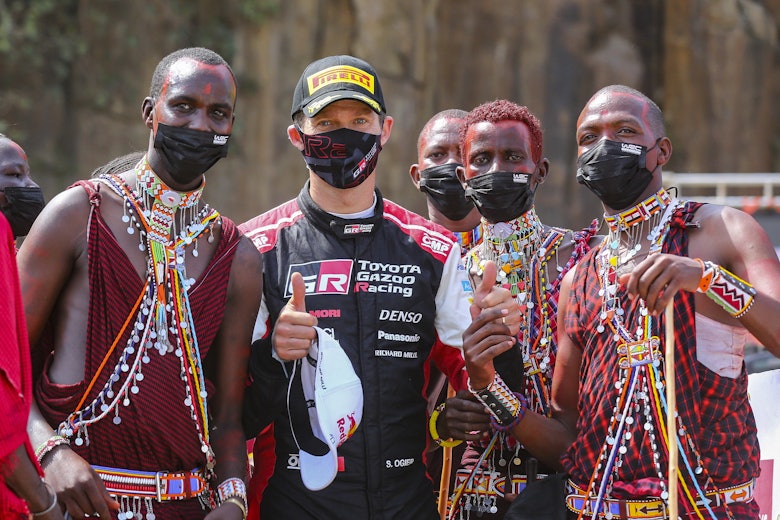
Last time the locals saw a WRC round, Ogier hadn’t even sat in a rally car.
“Honestly,” Ogier told DirtFish, “this is a beautiful victory for us. In a beautiful country. I think this rally didn’t disappoint.”
Unless you were wearing blue and orange.
Tänak’s (and Hyundai’s) torment
When Ott Tänak retired from Rally Italy earlier this month, I wasn’t sure whether or not to call him. I sought counsel from his PR manager Henri Rump. Henri said: “He’s back at the hotel.” Rarely has “He’s back at the hotel” meant: “Good luck with that…” more.
I tried. No answer. Understandable.
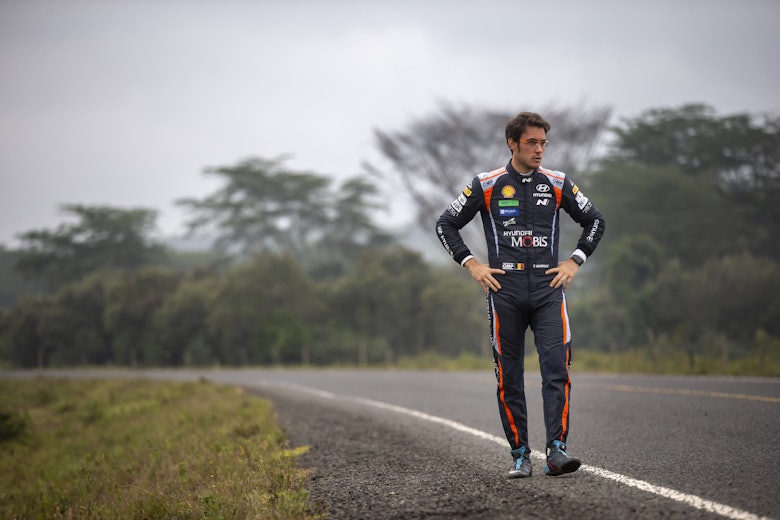
There was still some lingering trepidation when we saw him for a superally re-entry Sunday. It was somewhat surprising to find him fielding questions positively. He was upbeat.
“It’s the small things,” he said. “We need to get on top of the small things. We have a fast car, we know we have a fast car. But the details need sorting.”
Details like, for example, a heated windshield. When the drivers’ side of the Hyundai i20 Coupe WRC’s screen misted up in the Sleeping Warrior rain on Saturday afternoon, those words would have echoed around the Korean firm’s command center in Naivasha.
The inability to see cost the 2019 world champion a place on the provisional podium ahead of Sunday’s final five tests.
Acerbic is the only way to describe his attitude when he liberally drizzled his stage end words with sarcasm.
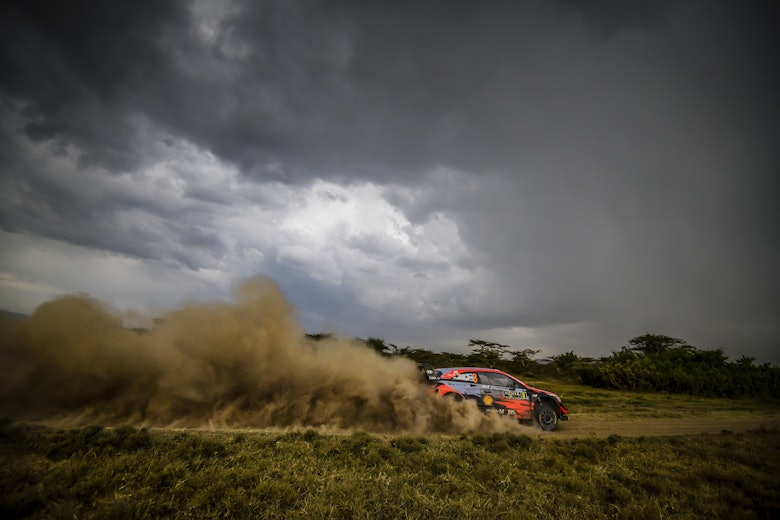
“It’s amazing,” he said. “The quality is amazing.”
The Estonian’s season has been a fairly good example of win or bust rallying. His victory in the Arctic Circle has been negated by a succession of issues including punctures in Monte Carlo, and suspension issues in Portugal and Sardinia. An off-the-pace fourth in Croatia allied to a hand-me-down podium after Neuville’s final morning retirement is not helping build momentum into a championship challenge.
Tänak talked of Saturday’s roads being the main meal after Friday’s appetiser. If that was the case, he was definitely suffering from indigestion at the end of the day.
It’s a reflection of the way Hyundai’s event went that Tänak drove at “50 or 60%” and came out as the team’s top-placed runner.
Neuville’s departure was an absolute shocker. The Belgian deserved this win. He set a simply superb pace through the first morning – which included passing within inches of a giraffe at 100mph. He then managed what looked to be a fairly major engine issue on Friday night and drove the perfect Saturday, only for a right-rear damper failure to end his rally first thing Sunday morning.
He deserved more than that. Far more.
For a third rally in succession, Hyundai has set the pace and looked like a class act, only to have the result undone by suspension failure. Dani Sordo didn’t even see Friday lunchtime before he was out with a broken suspension arm.
With no homologation jokers left, it’s debatable how much can be done to rectify the changes made to the Hyundai’s suspension set-up. The team will, no doubt, be looking forward to Estonia’s smoother roads next month.
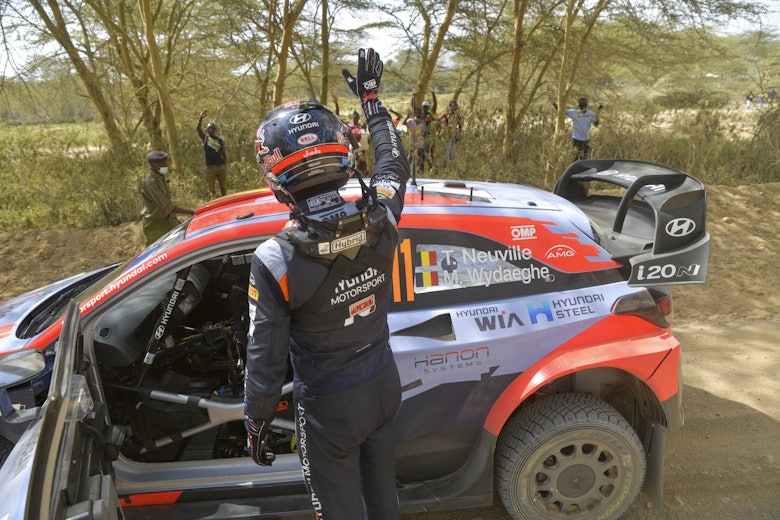
Conversely, this probably wouldn’t be the best time to remind them the rest of us will be celebrating the return of another rough diamond in the shape of the Acropolis come September…
M-Sport bridges the 19-year divide
Last time out in Africa, the Safari Rally was won by Colin McRae in a Ford Focus RS WRC. We all know that. What we didn’t know at the time was that a) it would take 19 years to get back to Kenya and b) M-Sport would still – seven world championship titles later – be right at the very sharp end of the series.
But what could success look like this time around? Instead of the world’s most famous rally driver, Richard Millener’s team headed south with a pair of young guns in the shape of Gus Greensmith and Adrien Fourmaux. Predictably, neither had competed in Africa before – but Fourmaux did, at least, have some recollection of having been on the continent before. When he was five.
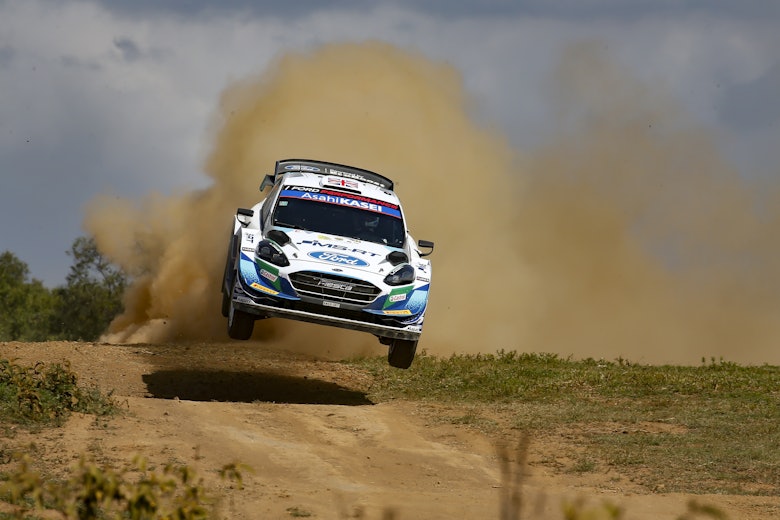
The good news for the two of them is that M-Sport always made its cars tough. While Hyundai and Toyota beefed up their i20s and Yaris WRC’s respectively, the two Fiesta WRCs left Dovenby Hall with a bottle of sun cream tucked away in the door pocket.
And the Cumbrians can take real pride from the fact that they were the only one of the three teams who brought their cars home with no technical issues of note. And they brought them home very, very quickly.
Fourmaux finally broke his and M-Sport’s 2021 stage win duck and would have nailed a sublime fourth place had it not been for a McRae-style cut on Sunday morning. The stewards took a dim view and landed him a 10-second penalty. Ironically he’d ended the event 9.9s ahead of Greensmith and, therefore, slipped to fifth by the smallest possible margin.
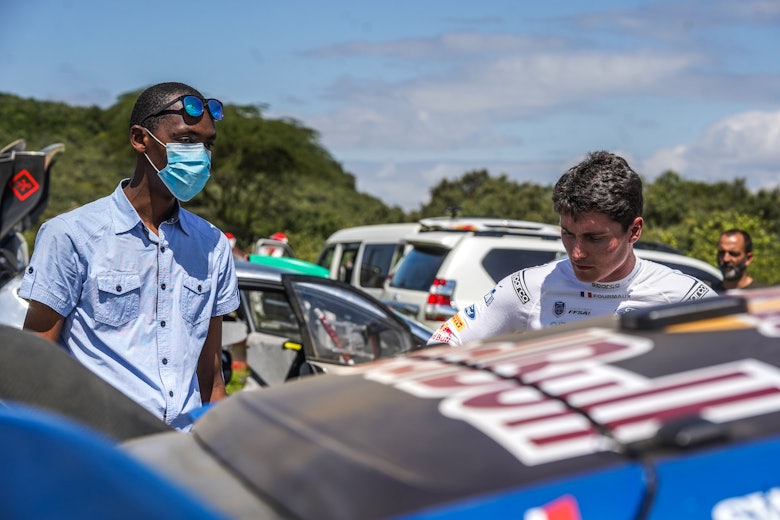
It didn’t matter. Both had driven exceptionally. Fourmaux’s speed and maturity were both talking points on only his second ever gravel rally in a Fiesta WRC. And exactly the same can be said for Gus. He’s making giant strides this season. Both are heaping the pressure on Teemu Suninen in the race for a 2022 seat…
Was it a real one?
Remember that debate former Safari-winning co-drivers Nicky Grist and Robert Reid had before the start of the rally? The only where Grist said last week couldn’t possibly be called a Safari Rally? The one where I said I agreed with him completely?
Hmm… I might have changed my mind a little bit. On Friday night, I’d changed my mind a lot. A very lot. Talking to some of the teams, there was a feeling that they might have been duped into thinking this was – in terms of micro topography – going to be a European WRC round which just happened to be running in Kenya. And that’s how it started out a couple of years ago.
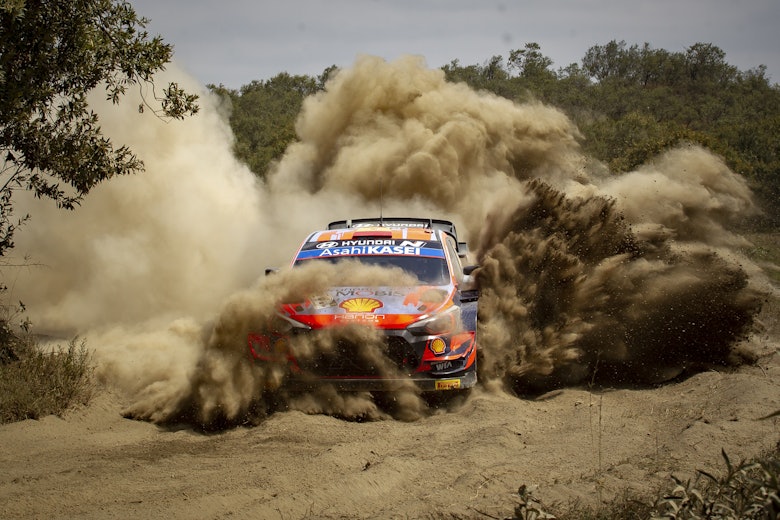
Then, around 18 months ago, Michéle Mouton – three-time world rally winner and WRC safety delegate – took a run down the roads and offered the organizers one piece of advice: “Make it more African.”
No problem. Friday’s stages to the south of Lake Naivasha were absolutely on the money in terms of their technical nature. They were a perfect mix of twisty, rough, rocky, flat-out fast and fesh-fesh. They were a traditional Safari Rally in miniature.
And Saturday offered the sort of speed and huge dust trails hardened Safari fans had been yearning for since 2002. All of those day three stages would have worked on the route for this event in its former life, the only difference being that they would have been twice the size with a good chunk of roughness thrown in. The same could be said for Sunday.
Last week was a best fit. A compromize. And the organizers, the FIA and WRC Promoter have to be congratulatedDavid Evans
To make last week fly with the WRC Promoter it really had to have the words ‘Rally’ and ‘Safari’ in its title. Yes, it could have gone with Rally Kenya, but a title like that, while arguably more accurate, is nothing like as marketable.
I can still sympathize with Grist’s perspective. When he sprayed champagne over Colin McRae and their Ford Focus RS WRC it was because they’d spent close to eight hours completing 600-plus competitive miles to win the event. Ogier and Julien Ingrassia were in the car a lot less across three and a bit days in and around Lake Naivasha.
That’s not their fault. They can only win the rally that’s put in front of them. And the rally that was put in front of them was something of a classic in terms of action and entertainment.
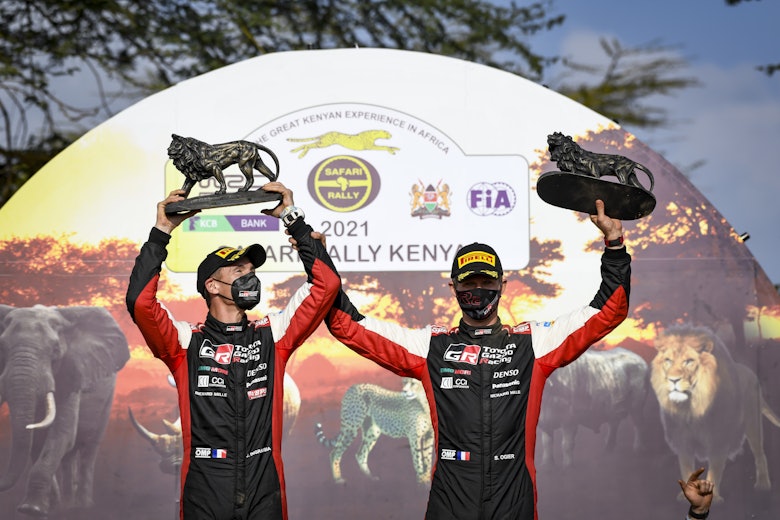
It has to be understood that a ‘proper’ Safari, under the current prescription WRC, is a square peg and a round hole. It won’t work. It can’t. Last week was a best fit. A compromize. And the organizers, the FIA and WRC Promoter have to be congratulated on finding a way of making Africa relevant, workable and worthwhile.
What did you make of the Safari’s return? Was it worthy of the name, and did the right driver win? Let us know in the comments.





